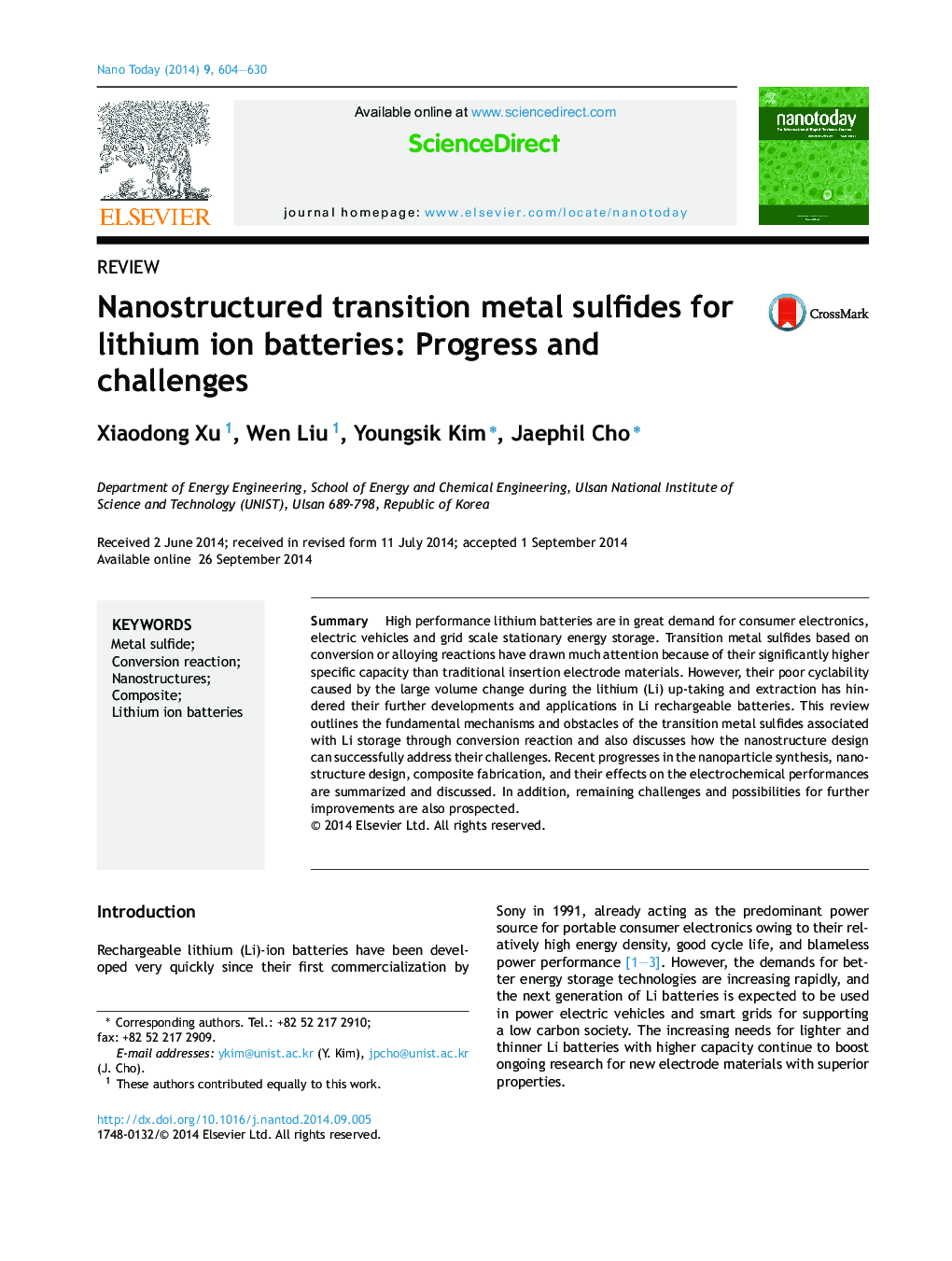| Article ID | Journal | Published Year | Pages | File Type |
|---|---|---|---|---|
| 32165 | Nano Today | 2014 | 27 Pages |
•Li storage mechanisms of the transition metal sulfides are discussed.•Nanostructural design/synthesis and composite fabrication of electrodes are summarized.•The electrode fabrication-electrochemical performances are correlated and discussed.•The further potentials for the transition metal sulfide electrodes are discussed.
SummaryHigh performance lithium batteries are in great demand for consumer electronics, electric vehicles and grid scale stationary energy storage. Transition metal sulfides based on conversion or alloying reactions have drawn much attention because of their significantly higher specific capacity than traditional insertion electrode materials. However, their poor cyclability caused by the large volume change during the lithium (Li) up-taking and extraction has hindered their further developments and applications in Li rechargeable batteries. This review outlines the fundamental mechanisms and obstacles of the transition metal sulfides associated with Li storage through conversion reaction and also discusses how the nanostructure design can successfully address their challenges. Recent progresses in the nanoparticle synthesis, nanostructure design, composite fabrication, and their effects on the electrochemical performances are summarized and discussed. In addition, remaining challenges and possibilities for further improvements are also prospected.
Graphical abstractFigure optionsDownload full-size imageDownload high-quality image (132 K)Download as PowerPoint slide
